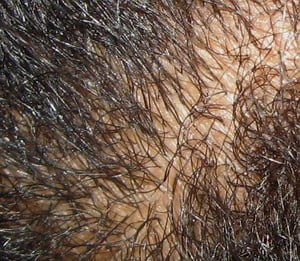Eating disorders such as anorexia and bulimia often physically manifest themselves in their sufferers. Friends and family observe dramatic weight changes, thinning hair or changes in social habits. Women suffering from EDNOS, or Eating Disorders Not Otherwise Specified, though have a hard time seeking treatment because they may look healthy and even be praised for their disciplined eating and exercise habits. Whether women are suffering from identifiable eating disorders or EDNOS, all of these disorders stem from self-esteem issues.
What is EDNOS?
The National Alliance on Mental Illness defines EDNOS as any eating disorder that affects a person’s thoughts, feeling or behavior but does not fit criteria of anorexia or bulimia. These persons may demonstrate symptoms of anorexia; however, they still have normal menstrual cycles and maintain a normal body mass index, estimated by measuring weight and height. Some EDNOS suffers may actually be overweight.
Calorie Restrictions
One symptom of an EDNOS is obsessive calorie counting and excessive knowledge of the amount of calories in foods. It’s hard to pinpoint when necessary calorie counting crosses the line between normal calorie counting to taking it to extremes. Usually, it has gone beyond keeping a food journal with calorie restrictions mean limiting the kinds of foods eaten and only eat small snacks instead of meals. Some people stop going out with friends because they don’t want to eat more than their allotted calories. Orthorexia is the medical term for coined by Dr. Steven Bratman to define the condition in which a person is obsessed with eating only healthy foods.
Table Habits
Playing with food, spitting out food or hiding food may be symptoms of EDNOS. At mealtime, persons may push food around the plate, take tiny bites or put food in napkins or under the plate. This EDNOS manifestation made me think of people who eat one pea at a time as part of their eating ritual. On the other end of the spectrum, overeating is another manifestation of a non-specific eating disorder. They may eat one meal a day, consuming large amounts of food at one setting. Instead of listening to the brain’s signals, they eat to the point of discomfort or until they become physically sick.
Weight Maintenance and Weight Loss Methods
Certain weight loss and weight maintenance method go hand-in-hand with strange eating habits. Individuals may keep diet pills, diuretics, laxatives and enemas on hand for those times when they binge on foods. After they go through one of their binges, they may resort to fasting, liquid diets or combinations of methods to purge their bodies of excess calories. People may or may not vomit. It is hard for doctors to diagnose EDNOS in people who don’t vomit because they don’t have scarring on their esophagus.
Compulsive Exercise
Anorexia Athletica, or compulsive exercise, is another symptom of an EDNOS as an attempt to burn all calories consumed. While individuals with anorexia nervosa eat very little or no calories and exercise, persons with anorexia athletica eat what seems to be normal calories and exercise well above the recommended amount of exercise, even up to six to eight hours a day. Exercise becomes an obsession instead of a healthy activity, decreasing a person’s energy level. EDNOS sufferers either brag about how much time they exercise or express disdain that they exercise so many hours a day. Physical manifestations include osteoporosis, broken or weak bones, and breathing difficulty.
Because these conditions are hard to identify, friends and family members have to recognize these behaviors. Like all eating disorders, EDNOS stem from low self-esteem and poor body image. One preventative method is watching what you say about a person’s body because saying something like “You’ve gained a little weight” can trigger obsessive behavior. Most people keep these habits secret because of embarrassment.
If a loved one begins manifesting EDNOS behavior, even if they are normal weigh or overweight, help them seek appropriate medical attention. Only a trained mental health professional can provide therapy for these situations. It takes a combination of physical exams and therapy to diagnose them. Patients may undergo cognitive-behavioral therapy and medication to overcome these disorders.
Sources:
http://www.eatingdisordersonline.com/explain/anorathletica.php
http://www.pamf.sutterhealth.org/teen/life/bodyimage/orthorexia.html
http://www.eatingdisorderexpert.co.uk/EatingDisordersNotOtherwiseSpecified.html
http://www.waldenbehavioralcare.com/ednos_facts.asp




